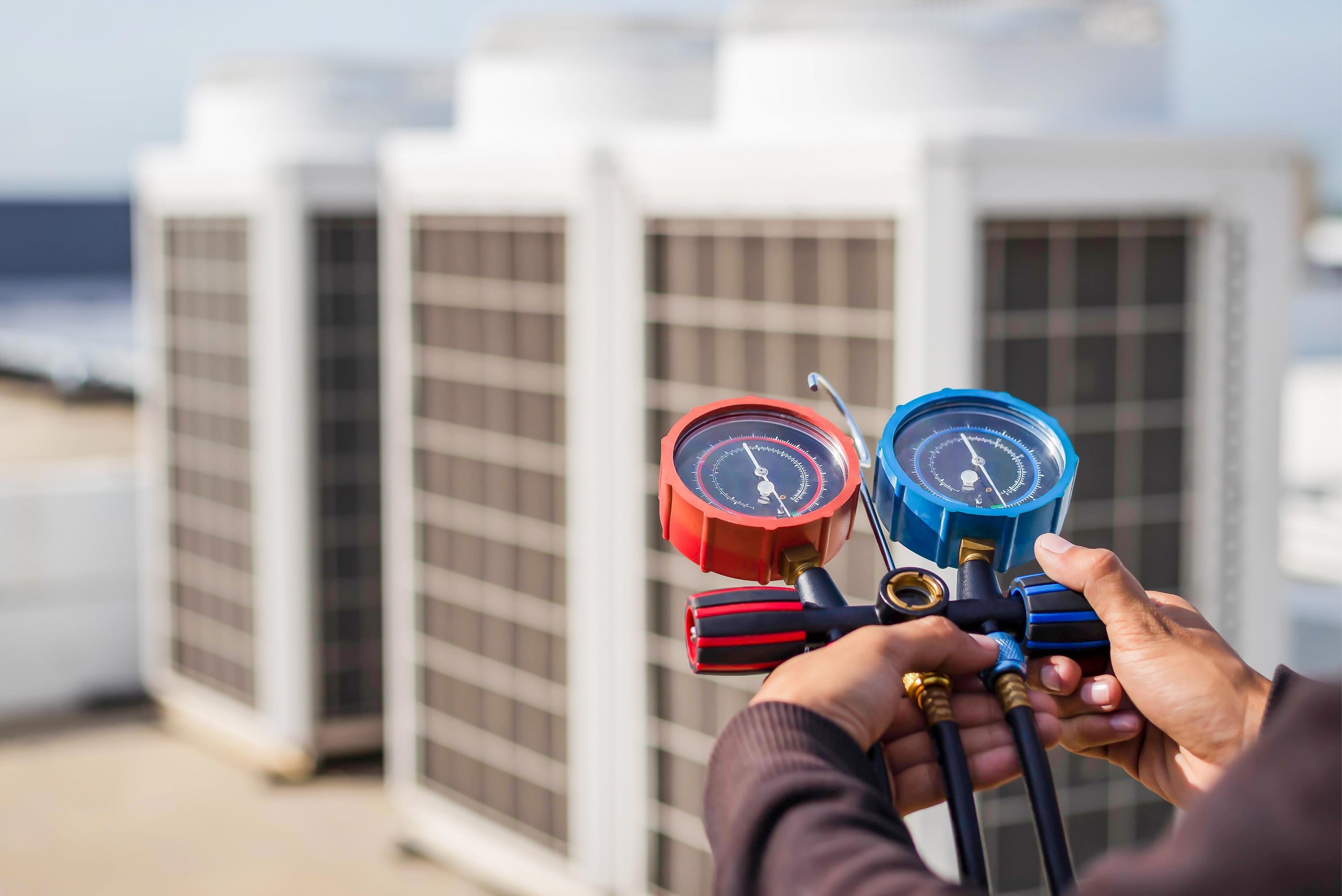
Manifold Gauge Sets: Reading Subcooling and Superheat
HFO/A2L Refrigerants
Refrigeration manifold gauge sets are an invaluable tool for HVAC technicians, allowing them to assess the performance of air conditioning and refrigeration systems against their design temperatures. Two critical measurements that manifold gauge sets, regardless of analog or digital manifolds, enable us to understand are Subcooling and Superheat. Subcooling refers to the design temperature difference between the liquid refrigerant and its saturation point, while superheat refers to the design temperature increase of the refrigerant vapor above its saturation point. This article aims to provide a comprehensive understanding of these concepts and guide technicians on the proper use of manifold gauge sets to measure subcooling and superheat accurately.
Understanding Subcooling: Subcooling is a crucial parameter that helps evaluate the efficiency and proper functioning of an air conditioning system or refrigeration system. It refers to the cooling of the liquid refrigerant below its saturation point, ensuring that the refrigerant remains in its liquid state before entering the expansion valve.
To measure subcooling correctly, follow these steps:
Prepare the system: Ensure the system is running and stabilized with the condenser, evaporator fans running as well as the compressor.
Connect the gauge hoses: This process will be the same for analog manifold gauges and digital manifold gauges. Attach the blue low side pressure hose to the vapor/suction line (this will be the bigger of the two lines) and the red high side pressure hose to the liquid line (this will be the smaller line). It is imperative that we use low-loss fitting on our hoses.
Pressure Readings: Observe the low pressure and high pressure readings on the manifold gauge this will be the predominant black numbers around the perimeter for analog gauges. Take note of the corresponding saturation temperatures for each.
Determine the saturation Point: Using the pressure-temperature chart from the condenser, find the ambient temperature listed, and you will find the design saturation point for the refrigerant used.
Measure the Subcooling: Take the saturation temperature reading on the liquid side gauge and subtract it from the actual liquid line temperature by means of a clamp on thermometer giving you the subcooling. If operating correctly, you should be very close to the design saturation point for the ambient outdoor temperature.
Superheat is another critical parameter to evaluate the performance and efficiency of an air conditioning or refrigeration system. It indicates the temperature increase of the refrigerant vapor above its saturation point as it leaves the evaporator coil and enters the compressor.
To measure superheat accurately, follow these steps:
Prepare the system: Ensure the system is running and stabilized with the condenser, evaporator fans running as well as the compressor.
Connect the gauge hoses: Attach the blue low pressure hose to the vapor/suction line (this will be the bigger of the two lines) and the red high pressure hose to the liquid line (this will be the smaller line). It is imperative that we use low-loss fitting on our hoses.
Pressure Readings: Observe the low pressure and high pressure readings on the manifold gauge; these will be the predominant black numbers around the perimeter for analog gauges. Take note of the corresponding saturation temperatures for each.
Determine the saturation Point: Using the pressure-temperature chart from the condenser, find the ambient temperature listed, and you will find the design saturation point for the refrigerant used.
Measure Superheat: This involves subtracting the actual suction line temperature found by means of a clamp on thermometer from the saturation temperature on the low pressure gauge and compare that to the design saturation point on the pressure temperature chart for that specific ambient. Your reading should be close.
Accurate measurement of subcooling and superheat is essential for HVAC technicians to assess the performance and proper refrigerant charge of air conditioning and refrigeration systems as to their design temperatures. Proper utilization of refrigerant manifold gauge sets enables technicians to obtain reliable information on how particular systems are operating. Having this skill at your disposal will increase the rates of successful diagnosis of a system, as well as to improve overall industry-standard skills.
Learn more about our A2L Refrigerant Certification program, as well as our EPA 608 Certification and EPA 609 Certification programs.

